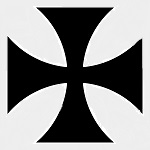Wings of the Great War WW16002 German Luft-Fahrzeug-Gesellschaft Roland D.VIa Fighter - Emil Koch, Jasta 32b, 1917 (1:72 Scale)
"The important thing in aeroplanes is that they shall be speedy."
- Baron Manfred Von Richthofen
 The Roland D.VI was a German fighter aircraft built at the end of World War I. It lost a fly-off to the Fokker D.VII, but production went ahead anyway as insurance against problems with the Fokker.
The Roland D.VI was a German fighter aircraft built at the end of World War I. It lost a fly-off to the Fokker D.VII, but production went ahead anyway as insurance against problems with the Fokker.
Prior to World War I, Pfalz Flugzeugwerke produced Morane-Saulnier monoplane designs under license. These aircraft entered military service as the Pfalz A- and E-series. In September 1916, Pfalz began producing the first of 20 Roland D.I and 200 Roland D.II fighters under license.
The Roland D.VI was designed by the Luft-Fahrzeug-Gesellschaft (L.F.G.), (whose aircraft were made under the trade name "Roland" after 1914 to avoid confusion with the Luftverkehrsgesellschaft m.b.H (L.V.G.)) late in 1917, with the prototype being the 1000th aircraft to be built by L.F.G., first flying in November 1917. The D.VI was a single bay biplane which discarded the L.F.G.-Roland patented Wickelrumpf (literally "wrapped body"), or semi-monocoque fuselage, constructed with two layers of thin plywood strips, diagonally wrapped around a male form to create a "half-shell", that used in previous L.F.G aircraft such as the Roland C.II, D.I and D.II in favor of the equally unusual (for aircraft use) Klinkerrumpf (or clinker-built) construction where the fuselage was built of overlapping thin strips of spruce over a light wooden framework. Visibility for the pilot was good, while the aircraft had above average maneuverability.
Pictured here is a 1:72 scale replica of a German Roland D.VIa fighter that was piloted by Emil Koch, who was attached to Jasta 32b during 1917.
Sold Out!
Dimensions:
Length: 4-inches
Wingspan: 5-inches
Release Date: December 2015
Historical Account: "Hunting Group" - Royal Bavarian Jagdstaffel 32, commonly abbreviated to Jasta 32, was a "hunting group" (i.e., fighter squadron) of the German Luftstreitkrafte, the air arm of the Imperial German Army during World War I. The unit would score 41 aerial victories during the war, including four enemy observation balloons. In turn, they would suffer the expense of eight killed in action, five killed in flying accidents, four wounded in action, two injured in accidents, and one taken prisoner of war.


